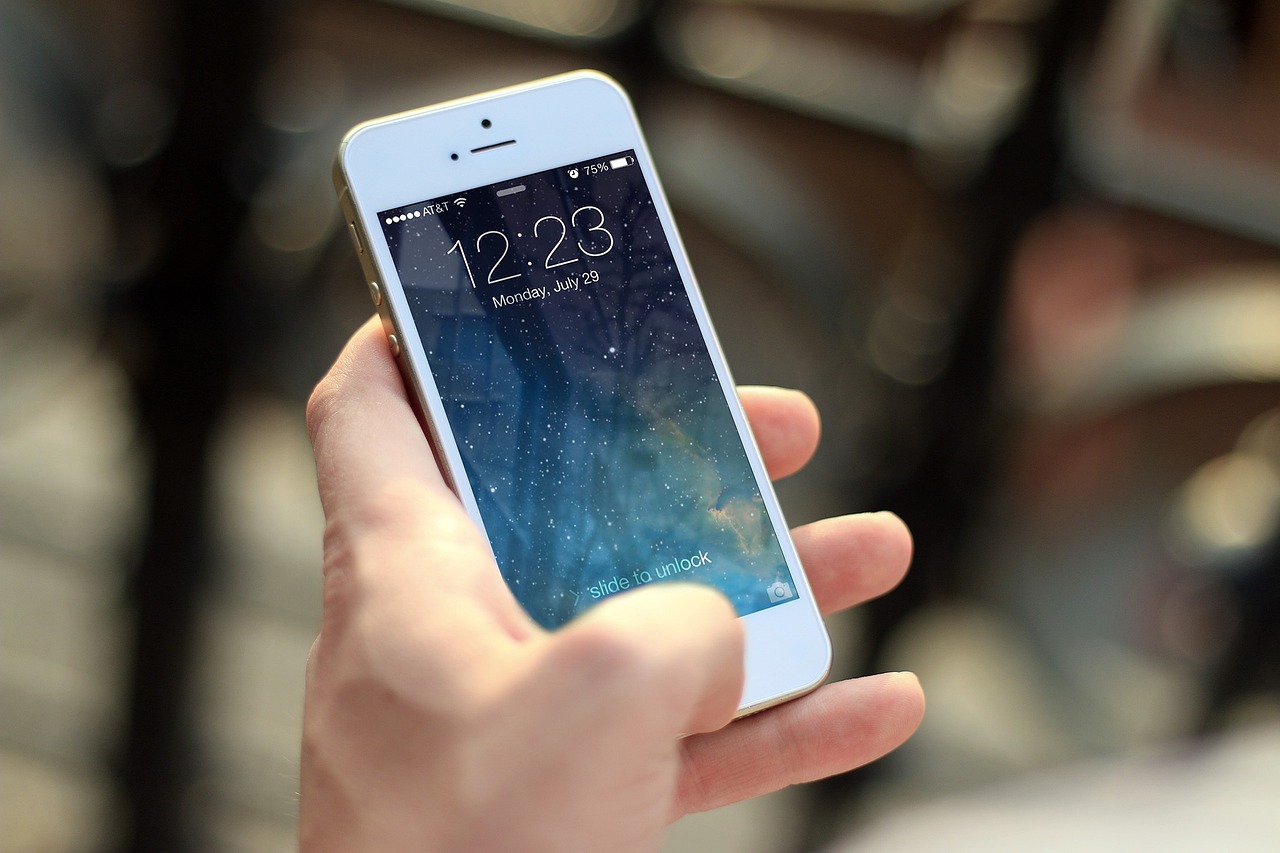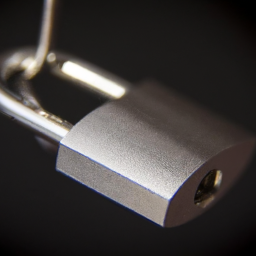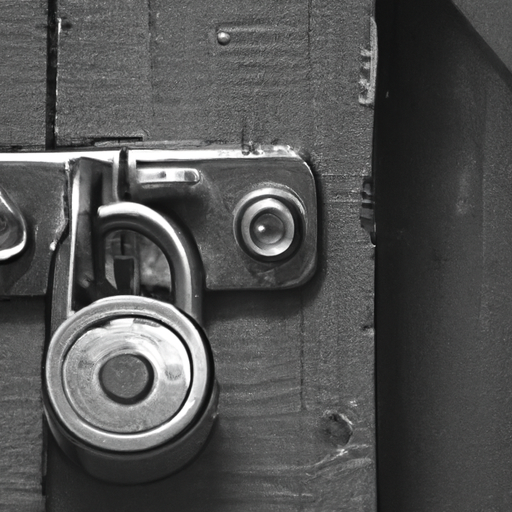How Can I Secure My Smartphone?
In today’s digital age, protecting your smartphone has become more important than ever. With the vast amount of personal and sensitive information stored on these devices, it is crucial to take the necessary steps to ensure their security. This article explores various methods and practices that you can implement to safeguard your smartphone from potential threats and unauthorized access. From utilizing strong passwords and enabling two-factor authentication to being cautious of malicious apps and regularly updating your device’s software, there are plenty of simple yet effective ways to enhance the security of your smartphone. So, let’s dive in and discover how you can secure your smartphone and enjoy a worry-free mobile experience.
Set a Strong Passcode or Password
Your first line of defense in securing your smartphone is setting a strong passcode or password. This is crucial because it helps prevent unauthorized access to your device. When setting a passcode or password, make sure to use a mix of characters, including uppercase and lowercase letters, numbers, and special symbols. By using a combination of different characters, you create a more complex and secure code that is harder to crack.
Avoid using common patterns or easily guessable combinations such as “1234” or “password.” These types of codes are incredibly weak and can be easily brute-forced. Instead, opt for a unique and random passcode or password that is not associated with any personal information that could be easily guessed.
Another option to consider for added security is biometric authentication. Many smartphones now offer fingerprint or facial recognition technology, which provides an extra layer of protection. These biometric methods are more secure than traditional passcodes or passwords because they are unique to you and cannot be easily replicated by others.
Enable Two-Factor Authentication
Two-factor authentication (2FA) is an additional security measure that adds an extra layer of protection to your smartphone. It requires you to provide two pieces of information to access your device or account. Typically, this involves something you know, like a password, and something you have, like a verification code.
When setting up 2FA on your smartphone, choose a reliable method that suits your needs. This could include receiving verification codes via SMS, using authentication apps like Google Authenticator, or employing hardware tokens. Each method has its own pros and cons, so it’s essential to choose one that you are comfortable with and that fits your lifestyle.
Additionally, if you use third-party apps or services that do not support 2FA, consider using app-specific passwords. These are separate passwords you create specifically for those apps, rather than using your main device passcode or password. By doing this, even if one of your app-specific passwords is compromised, the rest of your device remains secure.
Keep Your Operating System and Apps Updated
Keeping your smartphone’s operating system and apps updated is vital for maintaining security. Developers regularly release updates that address vulnerabilities, bugs, and other security issues. By enabling automatic updates on your device, you ensure that you receive these updates as soon as they become available.
In addition to automatic updates, it’s also essential to regularly check for updates manually. Sometimes, automatic updates can be delayed or not configured correctly. By periodically checking for updates, you can ensure that your device’s software is up to date, minimizing the risk of security breaches.
When you receive notifications for software updates, it is crucial to install them immediately. These updates often include patches for security vulnerabilities that cybercriminals may exploit. Delaying the installation of updates can leave your device vulnerable to attacks.
Beware of Suspicious Apps
Downloading apps is one of the best parts of owning a smartphone, but it’s essential to be cautious and only download from trusted sources. Stick to reputable app stores like Google Play Store or the Apple App Store to minimize the risk of downloading malicious or fake apps.
Before downloading an app, take the time to read user reviews and ratings. Feedback from other users can provide insights into the app’s credibility, security, and overall performance. If an app has numerous negative reviews or low ratings, it’s best to avoid downloading it.
Another crucial step is to check the permissions that an app requests during installation. Permissions allow apps to access different features and data on your smartphone. Ensure that the permissions requested are relevant to the app’s functionality. If an app requests unnecessary permissions or asks for access to sensitive data that it doesn’t need, it may be a red flag, and you should reconsider installing it.
Secure Your Data with Encryption
Encrypting your smartphone’s data adds an extra layer of protection, making it more difficult for unauthorized individuals to access your information if your device falls into the wrong hands. There are two primary forms of encryption to consider: full disk encryption and encryption for sensitive data.
Full disk encryption encrypts all the data on your device, including settings, apps, and personal files. This ensures that even if someone bypasses your lock screen, they won’t be able to read the encrypted data without the decryption key. Most modern smartphones have built-in options to enable full disk encryption, often located under the device’s security settings.
Encryption for sensitive data allows you to selectively encrypt specific files or folders on your device. This level of encryption is useful if you want to protect confidential documents, photos, or any other sensitive information from prying eyes. Many file management apps offer this feature, allowing you to encrypt specific files or folders with a password.
Consider exploring additional security options like remote wipe or lock features. These options allow you to remotely erase all the data on your device or lock it, respectively, in case it gets lost or stolen. Some smartphone manufacturers and operating systems include these features natively, but you can also find third-party apps that offer similar functionalities.
Use a Mobile Security App
Installing a reputable mobile security app on your smartphone adds an extra layer of protection against various threats, including malware, viruses, and other digital security risks. Look for well-known security apps that have positive reviews and a significant user base.
Once you have installed a mobile security app, make sure to run regular scans for malware. These scans detect and remove any malicious software that may have found its way onto your device. Set up scheduled scans, or perform manual scans periodically to ensure your smartphone remains secure.
Additionally, many mobile security apps offer anti-theft features to safeguard your device in case it is lost or stolen. These features often allow you to track the location of your device remotely, lock or wipe its data, and even trigger an alarm to deter thieves. Take advantage of these options to enhance the security of your smartphone.
Be Cautious of Public Wi-Fi Networks
When connecting to public Wi-Fi networks, exercise caution and be aware of the potential security risks involved. Public Wi-Fi networks, such as those found in cafes, airports, or hotels, are often unsecured, making them attractive targets for hackers.
Avoid using public Wi-Fi for sensitive transactions such as online banking or accessing personal information. Instead, save those activities for when you are connected to a secure and trusted network.
Utilizing a Virtual Private Network (VPN) can help secure your internet connection when using public Wi-Fi. A VPN encrypts your data, making it much more difficult for hackers to intercept and access sensitive information. Look for reputable VPN services that offer robust encryption and a wide range of servers to ensure a secure and stable connection.
Backup Your Data Regularly
Backing up your smartphone’s data is essential in case of accidental loss, theft, or hardware failure. By regularly backing up your data, you ensure that even if something happens to your device, you won’t lose important information or cherished memories.
Cloud backup services are an excellent option for backing up your data. Services like Google Drive, iCloud, or Dropbox offer convenient and secure cloud storage solutions where you can easily store your files, photos, and other data. Set up automatic backups whenever possible to ensure your data is continuously protected.
Creating local backups is another valuable backup strategy. Connect your smartphone to your computer and use software like iTunes or Samsung Smart Switch to create a backup of your device’s data. This method provides an additional layer of redundancy and allows for quick restoration in case of emergencies.
Once you have backed up your data, it’s crucial to periodically test your backups to ensure they are functioning correctly. Restore some files or data from your backup to confirm that everything is intact and accessible. Regularly testing your backups gives you peace of mind knowing that your data is secure and recoverable if needed.
Secure Your Bluetooth Connection
Bluetooth technology allows you to connect wirelessly to other devices, such as headphones, speakers, or even your car’s audio system. However, it’s essential to be aware of potential Bluetooth security risks and take measures to protect your device.
One way to enhance Bluetooth security is to keep your device’s Bluetooth visibility off when not in use. By disabling Bluetooth visibility, you prevent your smartphone from continuously broadcasting its presence, reducing the chances of unauthorized devices attempting to connect.
Pair your smartphone only with trusted devices to minimize the risk of unauthorized access. When pairing with a device for the first time, ensure that you are connecting to the correct one and verify its identity. Always use the device’s built-in pairing method or use a trusted authentication method to establish a secure connection.
Stay Vigilant with Phishing and Suspicious Calls
Phishing is a common technique used by cybercriminals to trick individuals into revealing personal information such as passwords, credit card details, or social security numbers. This can occur through emails, text messages, or even phone calls. Protect yourself from these scams by remaining cautious and following some key practices.
Never share personal information such as passwords, social security numbers, or financial details over email, text messages, or phone calls unless you are certain of the recipient’s identity. Legitimate organizations will not ask for this information via these channels.
When receiving calls from unknown numbers, be skeptical and avoid sharing any sensitive data immediately. Take the time to verify the caller’s identity through known contact information or official websites. Cybercriminals often use caller ID spoofing to appear as legitimate organizations, so it’s essential to stay vigilant and confirm before sharing any sensitive information.
Lastly, be wary of unsolicited emails or calls claiming to be from well-known companies or government agencies. These can often be phishing attempts trying to deceive you into divulging personal information. Always validate the source before responding or clicking on any links contained in the email or message.
By following these guidelines and implementing security measures, you can significantly enhance the security of your smartphone. Remember, taking proactive steps to protect your device and data is essential in today’s digital age. Stay informed, stay vigilant, and enjoy your smartphone with peace of mind.








